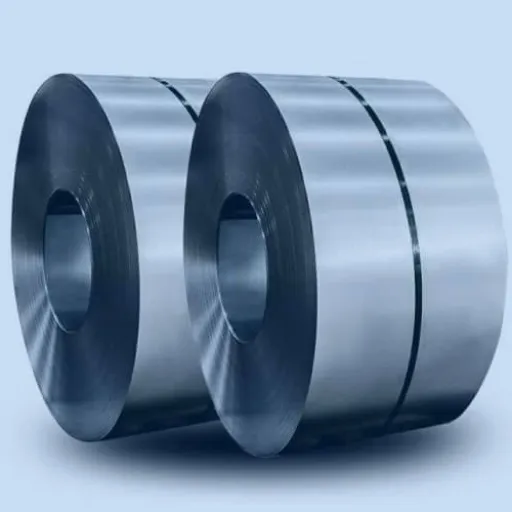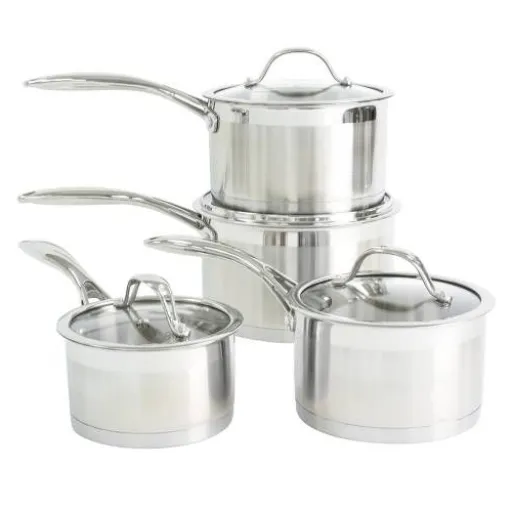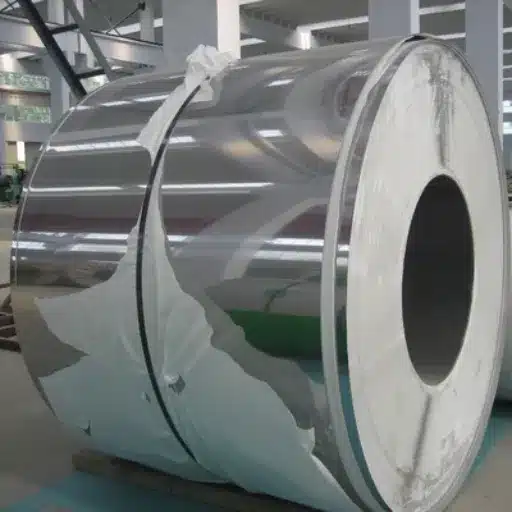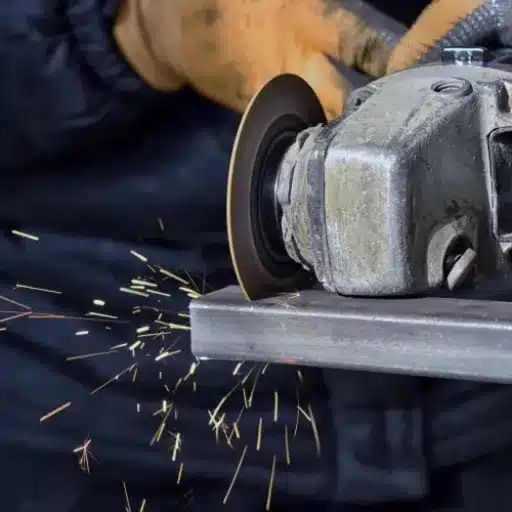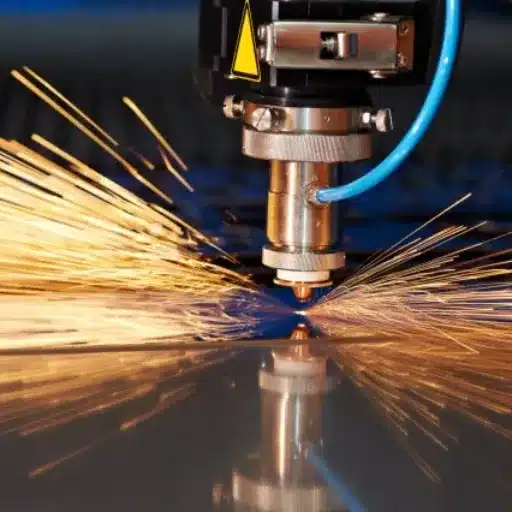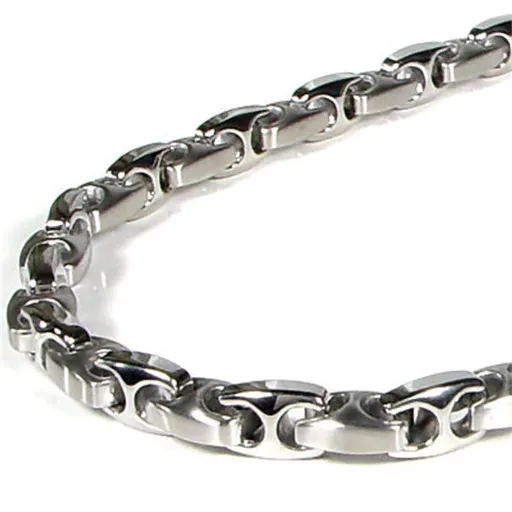Stainless steel coils are one of the components used in many industries on account of utility, being corrosion resistant, flexible, etc. There are various grades, but 304 grades are considered to be the most popular and widely used in widely varied applications. So what exactly makes 304 stainless steel coils so special, and how does this impact the industry? Does it affect construction, or automotive, or manufacturing development? Whether you are sourcing materials or are expanding your knowledge, this blog series will guide you through the basics of 304 stainless steel coils and grades, and the role they play in cooling coil applications. You will learn what makes these coils a trusted solution across the globe and how choosing the correct supplier can affect your projects drastically.
Introduction to Stainless Steel Coils
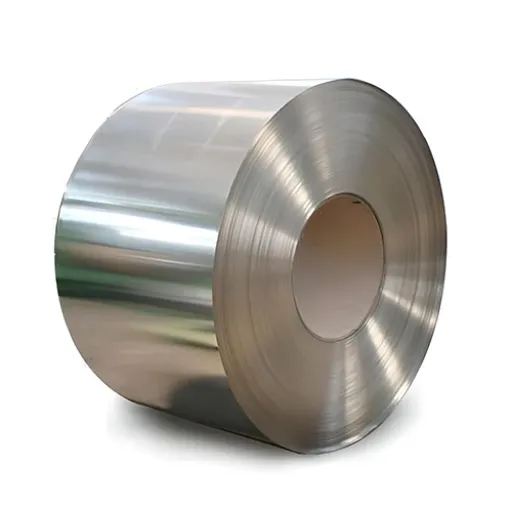
What are Stainless Steel Coils?
Stainless steel coils are long strips of stainless steel rolled and tightly coiled for minimum space in storage and transport. These coils being so versatile and durable, find wide application in construction, manufacturing, automotive, and aerospace industries. Manufactured in different grades, 304 and 316 being the most commonly used ones due to their great corrosion resistance and ability to be used in different environments.
Being an example of such stainless steel coils, 304 stainless steel coils are made with 18% chromium and 8% nickel, granting them a particular resistance to corrosion and oxidation. The global stainless steel market has recently been analyzed to see a CAGR of 5.68% from 2023 to 2030, with stainless steel coils being front and center in this growth. Their various applications involve cooling coils in HVAC systems and as parts of heavy machinery, assuring their reliability and efficiency as heat exchanger and structural support.
Advantages of Using Stainless Steel Coils
The myriad benefits presented by stainless steel coils render them highly indispensable in an array of industries. One of the greatest advantages is corrosion resistance, even when subjected to severe environments, making it a prime candidate for use in building structures, automobile parts, or chemical processing. Also, the high durability of stainless steel minimizes the maintenance cost and increases the operational life of equipment and structures.
Regarding weight to strength ratio, these stainless steel coils are highly prized. These stainless steel coils are robust yet fairly light, allowing for easier carrying and installation by contractors. Then, the material is very malleable, allowing manufacturers to produce coils of different sizes and shapes according to some industrial applications.
Types of Stainless Steel Coils
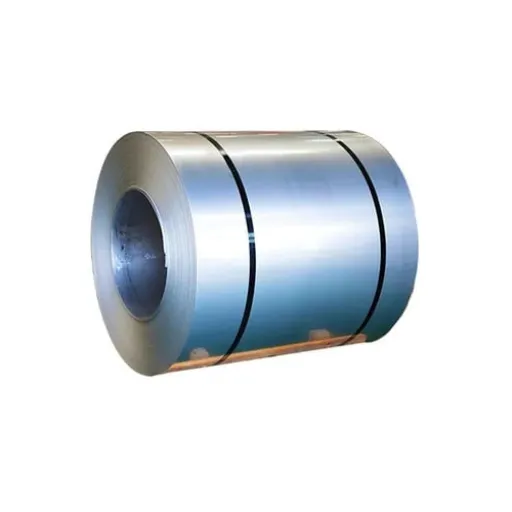
Overview of Stainless Steel Grades
Austenitic Stainless Steel (200 and 300 Series)
This is the most widely used type of stainless steel, making up approximately 70% of total production. These contain high levels of chromium and nickel, which usually afford excellent corrosion resistance and good flexibility. Grades such as 304 or 316 are widely used due to their capacity to resist oxidation and chemical exposure, as seen, for instance:
Ferritic Stainless Steel (400 Series)
The grade is magnetic and has moderate chromium levels but little or no nickel; therefore, they are relatively cheaper when compared to the austenitic steels. They enjoy resistance to stress corrosion cracking and find their way into automotive exhaust systems, boilers, and indoor architecture. Common grades include:
Martensitic Stainless Steel (400 and 500 Series)
It is considered the highest strength and hardness, imparted through heat treatment. Being lesser corrosion-resistant compared to that of the austenitic and ferritic grades, these steels are prized in cutlery, surgical instruments, and valves.
Duplex Stainless Steel
Because they combine features of both austenitic and ferritic structures, duplex stainless steels exhibit higher strength and corrosion resistance, especially with respect to localized corrosion such as pitting. It finds applications in chemical processing, offshore platforms, and pipelines.
Comparison of Stainless Steel 304 and 316
304 Stainless Steel is an austenitic grade with corrosion resistance, durability, and economical attributes. The corrosion resistance of stainless is faced because of its 18% chromium plus 8% nickel content in variable environments. However, 304 stainless steel is prone to chloride corrosion, wherein pitting might occur in extreme salt or caustic conditions. This cast of stainless is quite general: everything kitchen-related, appliances, automotive trim, and building materials.
Incorporating 2 to 3% molybdenum in its composition strengthens 316 stainless steel and improves performance. Molybdenum greatly improves resistance to pitting and crevice corrosion, especially in aggressive conditions such as marine or heavy chemical exposure industries. Whereas due to its enhanced durability under aggressive service conditions, 316 would be used in the construction of marine vessels, pharmacy warehouses, chemical processing warehouses, and medical equipment.
Choosing the Right Stainless Steel Coil
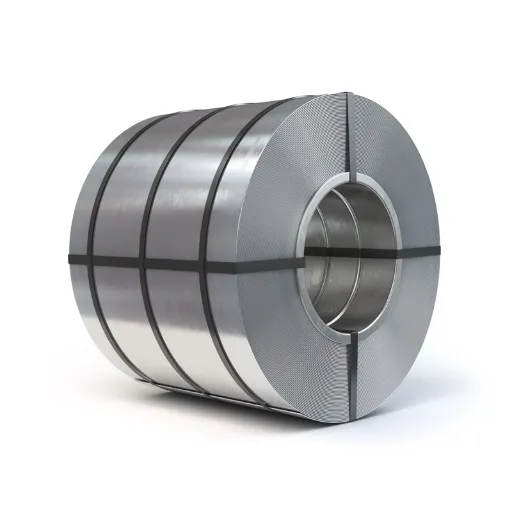
Factors to Consider: Durability and Corrosion Resistance
Durability varies based on the alloy composition. Thus, 316 stainless steel is stronger due to the presence of molybdenum. This element imparts higher resistance to pitting and crevice corrosion, mainly when marine or chloride conditions prevail. 304 stainless steel, conversely, although a little less strong when used in extreme service conditions, stands well for all-purpose applications under relatively mild conditions of exposure to aggressive chemicals.
Corrosion resistance is the primary and distinguishing characteristic of stainless steel, conjugated by the presence of chromium and some other alloying elements. For example, the 316 stainless traditionally possesses about 16–18% chromium and 2–3% molybdenum, affording it rust resistance and some resistance against localized corrosion. It has been stated that 316 can reduce corrosion formation up to 20% in a salt-water environment when compared with 304. Nevertheless, whenever corrosion is of no concern, 304 with 18-20% chromium and no molybdenum will give good resistance at a slightly lower price.
Costing Factors of Stainless Steel Coils
When considering stainless steel coils, cost factors significantly impact one’s decision process. The cost of stainless steel varies depending upon the grade and demand in the market, along with worldwide raw material costs for nickel, chromium, and molybdenum. For example, grade 304 stainless steel, being fairly versatile and having a decent degree of corrosion resistance, is generally cheaper compared to a grade like 316, which offers additional resistance to chlorides and saline environments courtesy of molybdenum.
Recently, price trends have indicated the stainless steel prices in the range of $1800 to $2500 per metric ton for grade 304 steels, with stainless steels of grade 316 priced at 20-30% more for additional properties. Some other specifications such as the thickness of the coil and widths, surface finish, and processing requirements affect pricing. Thinner or custom-sized coils have higher manufacturing costs compared to the standard ones because of the sophistication involved in their manufacturing.
Applications of Stainless Steel Coils

Industries Benefiting from Stainless Steel Coils
- Construction and Architecture
Stainless steel coils are applied in structural framework, roofing, façade works, and interior development based on many aesthetics, strength, and resistance to harsh environmental conditions. Market reports reveal that the global stainless steel market within the construction industry was valued at over $35 billion in 2022, increasing its sustainable and modern infrastructure applications.
- Automobile Industry
Stainless steel coils are used by automakers for the formation of the exhaust system, structural components, and fuel tanks, requiring properties such as strength, lightweight, and resistance to high-temperature circumstances. According to recent trends in the industry, about 12% of stainless steel production globally is consumed by the automobile sector to ensure safe and efficient functioning of vehicles.
- Food and Beverage Industry
The qualities of hygiene and corrosion resistance make stainless steel indispensable in the food-processing domain. They find application in stainless steel coils in pipes, tanks, and machines. It is reported that demand for stainless steel in food-grade applications increased by over 7% in 2023, due largely to increased food safety concerns.
- Chemical and Petrochemical Industry
The chemical and petrochemical industry heavily employs stainless steel coils for the fabrication of storage tanks, heat exchangers, and reactors. Stainless steel assures operational reliability against corrosive media and extreme temperatures. The industry held a sizable share for stainless steel consumption in 2022, estimated at above $15 billion worldwide.
Case Studies: Successful Implementation in Kitchenware
With increasing popularity, stainless steel cookware stands as a remarkable example. According to a study conducted in 2023, stainless steel cookware takes the share of over 40% in the global cookware market owing to its excellent heat distribution and durable nature. Brands such as All-Clad and Cusinart have promoted the material’s performance and reliability, especially multi-layered cookware with stainless steel in the core design.
The other great implementations are in cutlery. Stainless steel also resists corrosion, so knives, and other utensils retain their sharp appearance even after extended use. High-grade stainless steels such as 18/10 are now very commonplace in the manufacture of high-end knife sets and flatware because this type of steel is balanced so that chromium and nickel combine to promote hardness and luster.
Buying Guide: Selecting a Reliable Supplier

What to Look for in a Steel Supplier
Quality Assurance and Certification
If the supplier complies with industry standards and holds an ISO 9001 certification for quality management, then consider them qualified. You are dealing with high-quality steel, which is the undergirding for producing durable, reliable products. Do an investigation into their quality control procedures and ask them to furnish you with material test reports (MTRs). This will ensure that the materials comply.
Material Variety and Customization
An ideal supplier should be capable of offering a wide range of steel grades, finishes, and sizes according to your requirements. Whether stainless steel coils, sheets, or specialty grades, such as 304 or 316L, should be in their inventory, relevant to your project requirement. Also, consider those that provide the option of customization for exact specifications.
Reputation and Reliability
Research the supplier’s reputation. Positive customer reviews, case studies, and partnerships with industries are some of the factors indicating reliability. A good supplier will always be punctual to ensure seamless supply chain operation. For example, studies show 78% of businesses rank timely delivery by suppliers as top priority to avoid any delays in production.
Sustainability Practices
Sustainability is indeed all the rage nowadays, putting more and more emphasis on eco-friendly sourcing and recycling. The leading suppliers commonly will have details about their environment-friendly initiatives, from carbon footprint to the processes used for sustainable steel production. A recent report reveals that companies sourcing sustainable materials have gained up to 20% more trust and loyalty from their customers.
Tips While Purchasing High-Quality Stainless Steel Coils
Understand Grades and Specifications
The stainless steel coil comes in a wide array of grades like 304, 316, and 430, all for the purpose of fulfilling very specific uses. For example, 304 is highly corrosion resistant and is suitable for general uses, whereas 316 has great resistance to chemical and marine environments. Choose a grade that aligns with the requirements of your project.
Check Product Certifications
Choose a supplier that provides product certification ISO 9001 for quality management. Material Test Reports (MTRs) that test material composition against industry standards such as ASTM and EN specification should accompany the product. Verified certification guarantees the quality of the material.
Check Surface Finish
Stainless steel coils are fabricated in various surface finishes, such as No. 1, 2B, BA, and No. 4. The finish dictates the corrosion resistance, hygienic properties, and beauty. For example, the BA finish is good for decorative purposes, while the No. 2B finish is generally good-for-industrial-use. The finish should, therefore, be compatible with the end use of the material.
Evaluate Thickness Tolerance
Thickness tolerance can highly impact the choice of steel coils for various precision-demanding uses. Some studies have found high-quality coils with thickness deviations varying between ±0.02mm and ±0.05mm. Your vendor should, therefore, be able to provide tolerances standardized to your project specifications.
Reference Sources
-
Chemanalyst – Stainless Steel CR Coil Market Report
This report outlines the key target audience, market trends, and stakeholders involved in the stainless steel coil industry. It provides insights into the market dynamics and the importance of stainless steel coils in various industries.
Source Link -
Tuolian Metal – Stainless Steel Coil: The Complete Guide 2025
This comprehensive guide discusses the types, grades, uses, and market trends of stainless steel coils. It highlights the industries that rely on stainless steel coils and their applications, making it a valuable resource for understanding the target audience.
Source Link -
GHT Steel – 7 Essential Factors to Consider When Choosing the Best Stainless Steel Coils
This blog provides practical advice on selecting the best stainless steel coils, emphasizing quality and performance. It also discusses the considerations for businesses and industries when choosing stainless steel coils.
Source Link
Frequently Asked Questions (FAQs)
What is the best stainless steel coil for industrial manufacturing?
Usually, the best stainless steel coil for industrial manufacturing depends on the specifications demanded by the particular application. With greater demand is stainless steel grades 304 and 316, which are highly corrosion resistant and have good mechanical properties. If lower nickel content is preferred, the stainless steel series 201 can be considered.
How does one select the proper stainless steel grade for his project?
Choosing the right stainless steel grade means understanding the application and its requirements. For example, if you need a coil for heavy-duty applications, you might want to go with 304L or 316L, which provide greater resistance to corrosion. Otherwise, if it is less demanding, 201 could do; this is especially true if you want to pursue a more cost-effective solution.
What are alloys found in stainless steel coils?
Stainless steel coils come in different alloys meant for different applications. Common alloys used include 304, 316, and 430. Allied 300 series like 304 and 316 are austenitic, the best known for their strength and resistance to corrosion while, allied 400 series such as 430 are good in formability and less in cost.
What kinds of thickness are offered in stainless steel strip coils?
These stainless steel strip coils come in many thicknesses, with the widely used being 0.5mm thickness for many applications. Certainly, the thickness provides for flexibility when bending and shaping, along with strength. Hence, there are thicker ones available when strength is more important, depending on the requirement.
What about custom orders for stainless steel sheets and coils from Ulbrich?
Indeed, Ulbrich offers numerous customization options in stainless steel sheets and coils. They can procure any product to exact specifications, such as thickness, width, and finish, including 2B. These methods are varied enough to allow customers the opportunity to source the appropriate stainless steel for any specific application.

